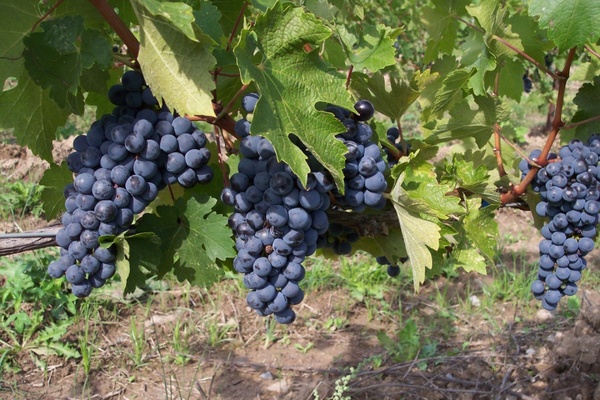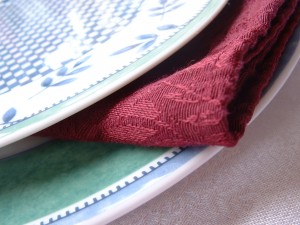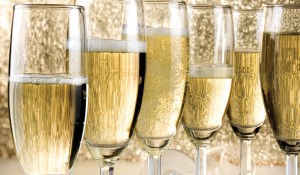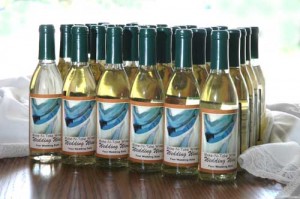
by Lorri | Nov 15, 2017 | UnCorked
I always love any reason to celebrate, but when it’s considered a “National Day” and includes wine, that’s even better. Today is National Zinfandel Day — a made-up worldwide celebration of the Zinfandel grape variety. The day celebrates and gives Zinfandel lovers around the globe a platform to express their passion for the grape and the wines made from it.
Numerous studies indicate the grape used for making California Zinfandel originated in Croatia, as it is genetically similar to an old varietal called Cljenak Kastelanski. Historians believe that in the 1820s a nursery owner brought Zinfandel cuttings that were Croatian in origin to the United States from an Austrian collection.
The Zinfandel name, however, is truly American, the earliest documented use of the name is when Boston nursery owner advertised “Zinfandel” for sale in 1832.
Zinfandel was introduced to California during the Gold Rush between 1848 and 1855. It was the top choice of the American alcoholic beverage consumer, even over whiskey. After the California Gold Rush, timber and wire were scarce. Production of Zinfandel grapes surged because they could easily be cultivated using traditional European “head pruning” techniques requiring a minimum of special equipment to grow. Zinfandel even found a niche in the homemade wine market, a legal loophole during Prohibition (1920-1933), while many other vines were being uprooted.
During Prohibition and the Great Depression, the U.S. wine industry weakened and most of the world had forgotten about this once popular grape. But in the 1960s vintners started handcrafting age-worthy wines blended to be “Bordeaux-like” wines. This was the change factoring in California’s path to high quality wines and Zinfandel was the distinguished grape among them.
In the 1970s a wave of blush wines started when California wineries began to draw free-run juice from Zinfandel grapes, fermenting it as “white” Zinfandel. This trend should be commended for the preservation of the old Zinfandel vines. Red table wines were decreasing in popularity and growers could have been forced to other varietals to keep up with consumer demand, leaving the old vines lost forever.
In 2006, then California state Sen. Carole Migden introduced a bill to designate Zinfandel as the official “historic wine of California.” The original reasoning behind appointing Zinfandel was to acknowledge its success in California, having been cultivated there since Gold Rush Days. Unfortunately, then-Gov. Arnold Schwarzenegger vetoed the measure.
Today, this grape continues to be celebrated not only for its historic influence on the American wine industry but its distinct style and flavor profile.
How will I be celebrating National Zinfandel Day? By sharing a bottle with friends and becoming a part of the global conversation. Connect with other Zinfandel lovers on social media with the hashtag #ZinDay.
THE VALUE
- 2015 Ridge Zinfandel, California (about $13 retail)
THE SPLURGE
- 2016 Artezin Old Vine Zinfandel, California (about $18 retail)

by Lorri | Dec 30, 2015 | UnCorked
New Year’s Eve is the ideal occasion to enjoy Champagne. Whether it’s the intriguing, elegant bubble in the glass or the romance of midnight toasts, it is unquestionably the drink of celebrations. Champagne adds traditional sparkle.
From Dom Perignon’s famous “Brothers, brothers, come quickly for I am drinking stars” to war-fueled discovery that coal burns hotter and thus produces stronger glass than wood, Champagne has held our fascination for centuries.
Champagne is made from a specific combination of grapes grown in France’s cool-climate vineyards. By law, only wine produced in the Champagne region of northeast France can be called Champagne. But many quality sparkling wines are made using the same combination of grapes and produced using the same method.
Pinot noir provides structure, body and a delicate fruit character while chardonnay contributes floral and fruit components. Pinot meunier is responsible for the hallmark aroma.
The complex process of producing sparkling wine is the main contributing factor when it comes to the cost of higher-quality bottles. The longer and slower the winemaking process, the more expensive and complex the final wine style will be. If you add the bubbles quickly by artificial methods, the result is a simple style, while adding them slowly, naturally and elaborately results in a more complex wine and a higher price tag.
For many of us, it simply isn’t New Year’s Eve without the famous sparkling wine.
So whether you are chanting the midnight countdown on New Year’s Eve or quietly celebrating with intimate friends, bubbly is perfect for toasting the beginning of a new year!
THE VALUE
- NV Piper Sonoma Brut, California (about $20 retail)
THE SPLURGE
- NV Veuve Clicquot Ponsardin, Reims, France (about $65 retail)
by Lorri | Dec 19, 2012 | UnCorked
 Choosing an ideal wine for Christmas festivities can be a hit or miss affair. We usually meticulously plan and prepare our menus, but sometimes the wine pairing is a last-minute thought. Here are some tips for effortlessly pairing Christmas foods and wine.
Choosing an ideal wine for Christmas festivities can be a hit or miss affair. We usually meticulously plan and prepare our menus, but sometimes the wine pairing is a last-minute thought. Here are some tips for effortlessly pairing Christmas foods and wine.
Christmas starters are the perfect time to pop open a bottle of bubbly. It pairs perfectly with a wide range of flavors and textures, but most importantly can handle anything from light and airy sweets to baked, grilled or even deep-fried appetizers.
THE VALUE
- NV Segura Viudas Brut Cava, Spain (about $11 retail) THE SPLURGE
- NV Roederer Estate Anderson Valley Brut, California (about $28 retail)
Ham is a staple on many Christmas menus, but the salty meat can be tricky to match with wine. Ingredients such as a honey or sugar glaze can accentuate the bitterness of tannins. The best pairings are light-bodied red wines (pinot noir, merlot, syrah) without over-powering tannins ormedium-bodied whites (chardonnay, Riesling, vermentino or albarino) without searing acidity.
THE VALUE
- 2011 Montes Alpha Chardonnay, Chile (about $12 retail)THE SPLURGE
- 2011 Tenuta Guado Al Tasso Vermentino, Italy (about $29 retail)
With beef, red wine is ideal, but as with other meats, it’s the added sauces or cooking methods that guide a perfect match. If the meat is cooked rare, the tannins are softened and offer a perfect opportunity to serve a high-tannin or youthful wine. If you plan to serve an older, fragile wine, consider preparing the meat medium-rare or medium.
THE VALUE
- 2010 Liberty School Paso Robles Cabernet Sauvignon, California (about $15 retail) THE SPLURGE
- 2010 Bell Vineyards Claret, California (about $36 retail)
Goose offers a unique texture and taste compared to traditional turkey. It is richer and generally has a distinct gamy flavor. When matching with wine, consider rich reds with a touch of spice such as Burgundies, Barolos, syrah or blends. For the adventurous, pairing aged Champagne is spectacular.
THE VALUE
- 2010 Red Bicyclette Syrah, France (about $10 retail) THE SPLURGE
- 2010 Canto de Apalta by Lapostolle Proprietary Blend, Chile (about $22 retail)
Turkey may be the easiest to match with wine. Because of its fairly simple texture and taste, it offers many wines the ability to show off. However, if you are planning to bring out a favorite cellared wine, consider roasting the turkey rather than smoking or grilling. The more delicate flavorwill allow the wine to shine. If your cellar is not overflowing with choices, consider pinot noir, Spanish Riojo or chardonnay.
THE VALUE
- 2011 Underwood Cellars Pinot Noir, Oregon (about $12 retail) THE SPLURGE
- 2011 Franciscan Estate Napa Valley Chardonnay, California (about $20 retail)
Something sweet will most likely be a part of your celebration. Keep it simple and remember the cardinal rule – the wine should be sweeter than the dessert.
THE VALUE
- 2011 Woodbridge by Robert Mondavi Moscato, California (about $10 retail) THE SPLURGE
- 2011 Tintero Moscato d’Asti, Italy (about $19 retail)
by Lorri | Aug 1, 2012 | UnCorked

A few weeks ago a friend asked for my advice on the perfect drink to celebrate the high points in life. It’s always interesting because I want to blurt out, “Champagne, of course,” but then I remember many other sparkling wines are equally appropriate to deliver the celebratory pop!
I consider a wedding the most important celebratory event of most of our lives. If you are going to splurge for Champagne, this is the occasion to do it. Events with a large number of guests are where this splurge becomes a challenge. Remember it doesn’t need to be the same brand or bottle served throughout the reception. People tend to remember tasting the first and last glass of the celebration, so remember this timing when considering the budget.
The golden wedding anniversary celebration deserves the paramount. But because the guest list will likely include several generations, it’s best to stay with familiar styles your guest will enjoy. These may be slightly sweeter or off-dry. Keep in mind this is also a group more likely than most to appreciate a vintage Champagne or a special bottle you’ve been holding out for the occasion.
A 21st-birthday celebration generally will involve younger guests and most likely not all able to savor the bubbly. For those who have cellared a wine for the occasion this is the ideal moment for your vintage Champagne to be opened. To keep things festive for everyone, consider serving an alcohol-free sparkling beverage.
Some christenings and bar mitzvahs are celebrated during the day and can stay with a more casual wine like a California sparkling or Spanish cava. If the menu includes sweets, a Moscato d’Asti will not only be an ideal pairing but a safe wine for serving a diverse crowd.
by Lorri | Apr 18, 2012 | UnCorked
 Brides are finalizing their spring and summer wedding plans — some with extreme relief and others with overwhelming stress. With a wealth of wedding planning advice, most have confidently confirmed the dress, flowers and cake, but the celebratory drink sometimes is a last-minute thought.
Brides are finalizing their spring and summer wedding plans — some with extreme relief and others with overwhelming stress. With a wealth of wedding planning advice, most have confidently confirmed the dress, flowers and cake, but the celebratory drink sometimes is a last-minute thought.
The most important first step in choosing the ideal wine is your budget. Knowing how much you want to spend for your wine and beverages is the starting point for your caterer, retailer or consultant.
Exactly how much wine to buy depends on the time of day, number of guests and overall format of your reception. A daytime toast with wedding cake will require considerably less wine than an evening of dinner and dancing. For evening receptions, most wedding planners figure on each guest drinking two glasses of wine every two hours. If you’re without a consultant to tally how much wine to order there are many websites with wedding wine calculators. RealSimple. com offers an easy calculation based on the number of guests, type of beverage and time of day for the big event.
With your style in mind, make your plans based on how many people you will be serving at the reception. If you plan for 300 guests, an expensive vintage wine most likely will not be necessary. However, if your wedding will be intimate, in a home or small setting, you may want to give more attention to detail and stay with my past advice: Buy the best wine you can afford.
Choosing the style of wine for a reception can be straightforward if you are only serving cake and sweets. A glass of Champagne or sparkling wine lends a celebratory touch and an easy resolution. If your menu is more complex, select food-friendly wines such as chardonnay, pinot grigio, merlot, pinot noir and cabernet sauvignon. And if you still want the bubbly toast, choose a sparkling wine from California or Australia, where many finds are under $10 a bottle.
THE VALUES
- NV Seaview Brut, Australia (about $10 retail)
- 2011 Chateau Bonnet Bordeaux Blanc, France (about $14 retail)
- 2011 Santa Rita 120 Merlot, Chile (about $11 retail)
THE SPLURGES
- 2007 Argyle Brut Sparkling, California (about $34 retail)
- 2010 Cambria Katherine’s Vineyard Chardonnay, California (about $28 retail)
- 2009 Clos Pegase Napa Valley Merlot, California (about $31 retail)


 Choosing an ideal wine for Christmas festivities can be a hit or miss affair. We usually meticulously plan and prepare our menus, but sometimes the wine pairing is a last-minute thought. Here are some tips for effortlessly pairing Christmas foods and wine.
Choosing an ideal wine for Christmas festivities can be a hit or miss affair. We usually meticulously plan and prepare our menus, but sometimes the wine pairing is a last-minute thought. Here are some tips for effortlessly pairing Christmas foods and wine.
 Brides are finalizing their spring and summer wedding plans — some with extreme relief and others with overwhelming stress. With a wealth of wedding planning advice, most have confidently confirmed the dress, flowers and cake, but the celebratory drink sometimes is a last-minute thought.
Brides are finalizing their spring and summer wedding plans — some with extreme relief and others with overwhelming stress. With a wealth of wedding planning advice, most have confidently confirmed the dress, flowers and cake, but the celebratory drink sometimes is a last-minute thought.